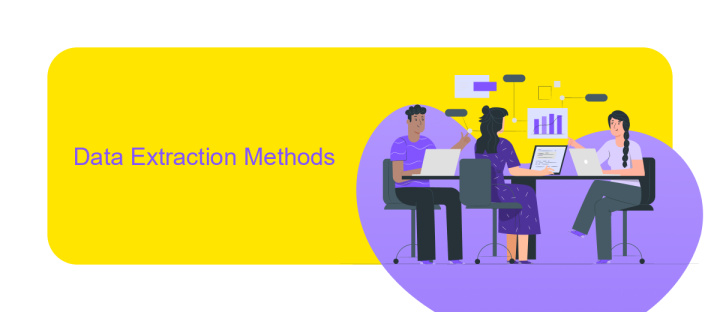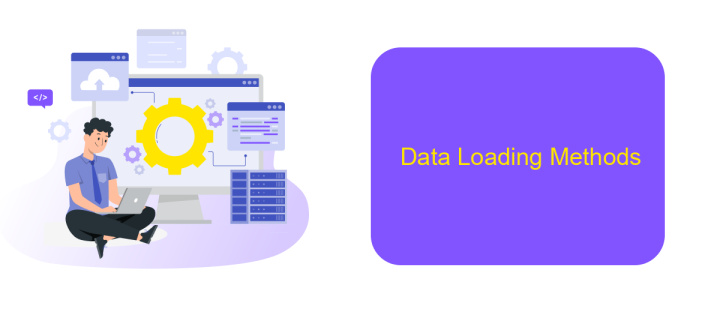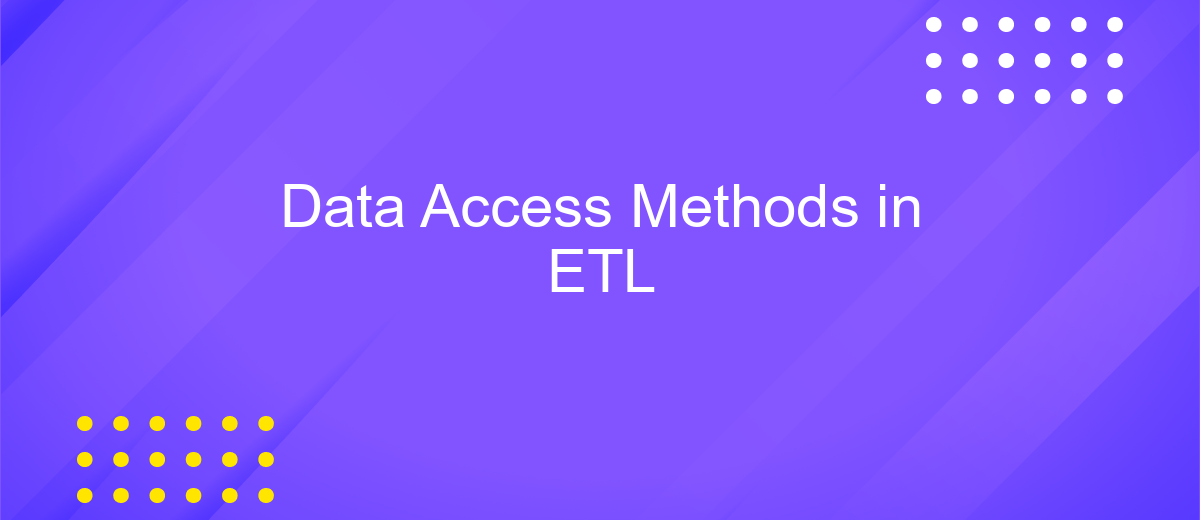Data Access Methods in ETL
In the realm of data integration, Extract, Transform, Load (ETL) processes are pivotal for consolidating and optimizing data from disparate sources. Understanding the various data access methods in ETL is crucial for ensuring efficient and reliable data flow. This article delves into the primary techniques used to access data, highlighting their applications, benefits, and potential challenges in modern ETL workflows.
Introduction
In the realm of data integration, Extract, Transform, Load (ETL) processes play a pivotal role in ensuring data is accessible, clean, and ready for analysis. Understanding the various data access methods in ETL is crucial for optimizing these processes and enhancing the efficiency of data workflows.
- Direct Database Access
- API Integration
- File-Based Access
- Cloud Storage Access
Each method offers unique advantages and challenges, making it essential to choose the right approach based on specific needs. For instance, API integration can streamline data access from various sources, and services like ApiX-Drive simplify the setup of these integrations, enabling seamless data flow. By leveraging these methods effectively, organizations can ensure robust data pipelines that support informed decision-making and strategic initiatives.
Data Extraction Methods

Data extraction is the initial and crucial step in the ETL (Extract, Transform, Load) process. It involves retrieving raw data from various sources such as databases, APIs, flat files, and web services. The methods of extraction can vary depending on the source and the requirements of the ETL process. Common extraction techniques include full extraction, where all data is extracted in one go, and incremental extraction, where only the data that has changed since the last extraction is retrieved. This ensures that the ETL process is efficient and minimizes the load on the source systems.
One effective way to streamline data extraction is by using integration services like ApiX-Drive. ApiX-Drive simplifies the process by providing pre-built connectors to various data sources, enabling seamless data retrieval without extensive coding. This tool can automatically synchronize data from multiple platforms, ensuring that the extracted data is up-to-date and ready for transformation and loading. By leveraging such services, organizations can significantly reduce the complexity and time required for data extraction, allowing them to focus on analyzing and utilizing the data effectively.
Data Transformation Methods

Data transformation is a crucial step in the ETL process, ensuring that the extracted data is converted into a suitable format for analysis and reporting. This step involves various techniques to clean, standardize, and enrich data, making it more useful and meaningful for business intelligence purposes.
- Data Cleansing: This method involves identifying and correcting errors and inconsistencies in the data to improve its quality.
- Data Aggregation: Combining multiple data sources into a single, summarized dataset to facilitate easier analysis.
- Data Standardization: Converting data into a common format to ensure consistency across different datasets.
- Data Enrichment: Enhancing the data by adding additional information from external sources.
- Data Filtering: Removing unnecessary or irrelevant data to streamline the dataset.
Utilizing services like ApiX-Drive can simplify the data transformation process by automating data integration and transformation tasks. ApiX-Drive allows seamless connectivity between various applications and data sources, ensuring that the transformed data is readily available for analysis. By leveraging such tools, businesses can save time and resources while maintaining high data quality and consistency.
Data Loading Methods

Data loading is a critical phase in the ETL process, involving the transfer of data from the staging area to the target database or data warehouse. This step ensures that the transformed and cleaned data is available for analysis and reporting. Efficient data loading methods are essential for maintaining data integrity and performance.
There are several methods to load data, each with its own advantages and use cases. Choosing the right method depends on factors such as data volume, frequency of updates, and the specific requirements of the target system. Common data loading methods include bulk loading, incremental loading, and real-time loading.
- Bulk Loading: Ideal for large volumes of data, this method loads data in large batches, minimizing the number of transactions.
- Incremental Loading: This method updates only the data that has changed since the last load, reducing the amount of data processed.
- Real-Time Loading: Suitable for time-sensitive data, this method ensures that data is continuously updated in near real-time.
Tools like ApiX-Drive can facilitate the data loading process by automating the integration between various data sources and the target system. ApiX-Drive helps streamline the data loading process, ensuring timely and accurate data transfer, which is crucial for effective data analytics and decision-making.


Conclusion
In conclusion, selecting the appropriate data access methods in ETL processes is crucial for optimizing performance, ensuring data integrity, and achieving seamless data integration. By carefully evaluating the characteristics and requirements of your data sources, you can choose the most efficient methods that align with your ETL objectives. Whether you opt for direct access, API-based retrieval, or a hybrid approach, each method offers unique advantages and challenges that must be considered.
Furthermore, leveraging integration services like ApiX-Drive can significantly streamline the setup and management of data flows. ApiX-Drive's robust platform provides a user-friendly interface and a wide range of connectors, simplifying the process of integrating disparate systems. This not only reduces the complexity of ETL configurations but also enhances the reliability and scalability of your data integration efforts. Ultimately, a strategic approach to data access methods, supported by powerful integration tools, can drive more effective and efficient ETL operations.
FAQ
What are the common data access methods used in ETL processes?
How can I automate data access in my ETL process?
What are the security considerations when accessing data for ETL?
How do APIs facilitate data access in ETL processes?
What challenges might I face with direct database connections in ETL?
Apix-Drive is a simple and efficient system connector that will help you automate routine tasks and optimize business processes. You can save time and money, direct these resources to more important purposes. Test ApiX-Drive and make sure that this tool will relieve your employees and after 5 minutes of settings your business will start working faster.

